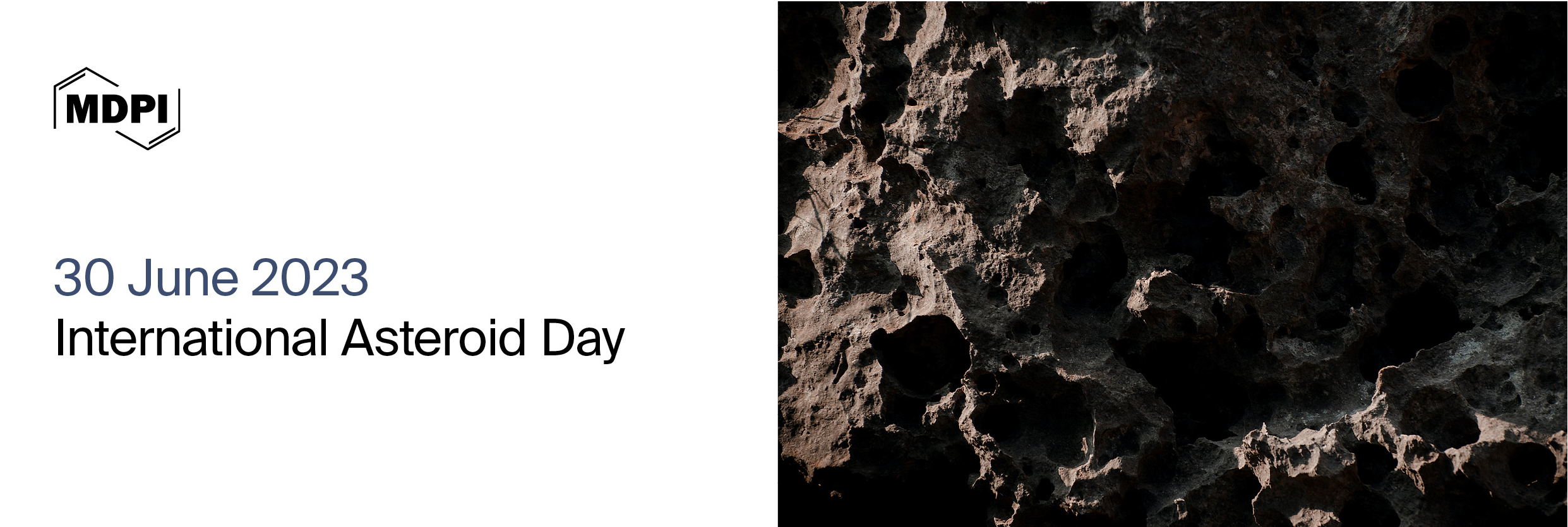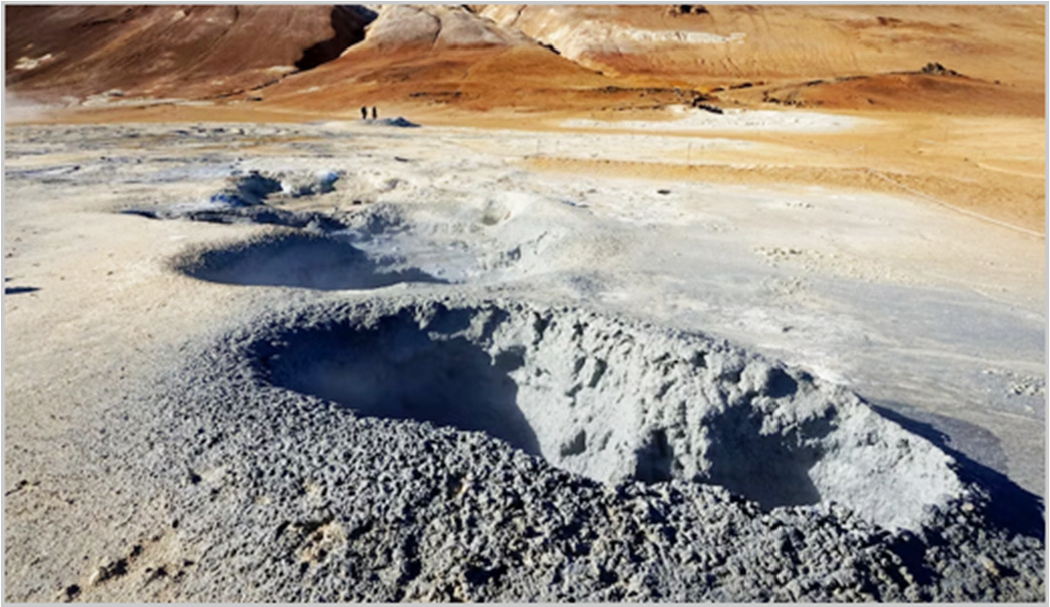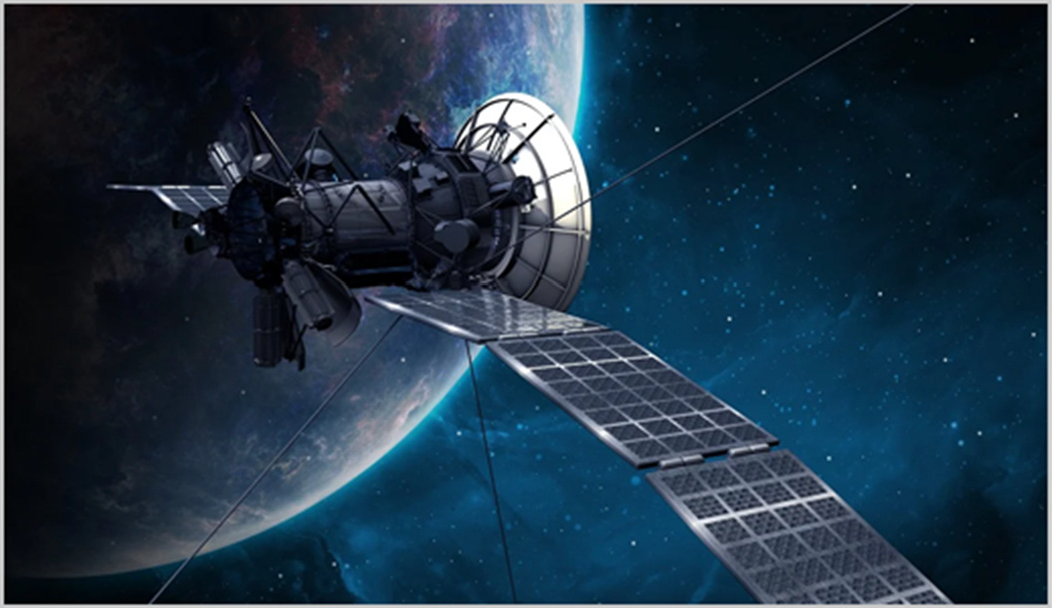
Journal Menu
► ▼ Journal Menu-
- Sensors Home
- Aims & Scope
- Editorial Board
- Reviewer Board
- Topical Advisory Panel
- Instructions for Authors
- Special Issues
- Topics
- Sections & Collections
- Article Processing Charge
- Indexing & Archiving
- Editor’s Choice Articles
- Most Cited & Viewed
- Journal Statistics
- Journal History
- Journal Awards
- Society Collaborations
- Conferences
- Editorial Office
Journal Browser
► ▼ Journal Browser-
arrow_forward_ios
Forthcoming issue
arrow_forward_ios Current issue - Vol. 25 (2025)
- Vol. 24 (2024)
- Vol. 23 (2023)
- Vol. 22 (2022)
- Vol. 21 (2021)
- Vol. 20 (2020)
- Vol. 19 (2019)
- Vol. 18 (2018)
- Vol. 17 (2017)
- Vol. 16 (2016)
- Vol. 15 (2015)
- Vol. 14 (2014)
- Vol. 13 (2013)
- Vol. 12 (2012)
- Vol. 11 (2011)
- Vol. 10 (2010)
- Vol. 9 (2009)
- Vol. 8 (2008)
- Vol. 7 (2007)
- Vol. 6 (2006)
- Vol. 5 (2005)
- Vol. 4 (2004)
- Vol. 3 (2003)
- Vol. 2 (2002)
- Vol. 1 (2001)
Need Help?
Announcements
28 June 2023
2023 International Asteroid Day

International Asteroid Day is observed annually on 30 June to mark the date of Earth’s largest asteroid impact in recorded history, the Siberia Tunguska event. It was established by the United Nations in 2016 to increase public awareness of the risk of an asteroid impact and to inform the public about crisis communication actions to be taken at the global level in the event of a credible NEO threat.
To further explore the related research on the 2023 International Asteroid Day, we have gathered open access academic articles on the topic of asteroids. We hope to share the up-to-date scientific knowledge in the field of asteroids with the world on this special day.

|
|
|

“Applied Trajectory Design for CubeSat Close-Proximity Operations around Asteroids: The Milani Case”
by Claudio Bottiglieri, Felice Piccolo, Carmine Giordano, Fabio Ferrari and Francesco Topputo
Aerospace 2023, 10(5), 464; https://doi.org/10.3390/aerospace10050464
“Fitting Power Spectrum of Scalar Perturbations for Primordial Black Hole Production during Inflation”
by Daniel Frolovsky and Sergei V. Ketov
Astronomy 2023, 2(1), 47-57; https://doi.org/10.3390/astronomy2010005
“Avoiding the “Great Filter”: A Projected Timeframe for Human Expansion Off-World”
by Jonathan H. Jiang, Philip E. Rosen and Kristen A. Fahy
Galaxies 2021, 9(3), 53; https://doi.org/10.3390/galaxies9030053
“History of the Terminal Cataclysm Paradigm: Epistemology of a Planetary Bombardment That Never (?) Happened”
by William K. Hartmann
Geosciences 2019, 9(7), 285; https://doi.org/10.3390/geosciences9070285
“Small All-Range Lidar for Asteroid and Comet Core Missions”
by Xiaoli Sun, Daniel R. Cremons, Erwan Mazarico, Guangning Yang, James B. Abshire, David E. Smith, Maria T. Zuber, Mark Storm, Nigel Martin, Jacob Hwang et al.
Sensors 2021, 21(9), 3081; https://doi.org/10.3390/s21093081
“Trajectories Derived from Periodic Orbits around the Lagrangian Point L1 and Lunar Swing-Bys: Application in Transfers to Near-Earth Asteroids”
by Rebeca S. Ribeiro, Cristiano F. de Melo and Antônio F. B. A. Prado
Symmetry 2022, 14(6), 1132; https://doi.org/10.3390/sym14061132
“Capture in Regime of a Trapped Motion with Further Inelastic Collision for Finite-Sized Asteroid in ER3BP”
by Sergey Ershkov, Dmytro Leshchenko and Alla Rachinskaya
Symmetry 2022, 14(8), 1548; https://doi.org/10.3390/sym14081548
“New Tools for the Optimized Follow-Up of Imminent Impactors”
by Maddalena Mochi and Giacomo Tommei
Universe 2021, 7(1), 10; https://doi.org/10.3390/universe7010010
“Near-Earth Asteroid Capture via Using Lunar Flyby plus Earth Aerobraking”
by Yirui Wang and Mingtao Li
Universe 2021, 7(9), 316; https://doi.org/10.3390/universe7090316
“Short-Term Consequences of Asteroid Impacts into the Ocean: A Portuguese Case Study”
by Renato H. Morais, Luís F. F. M. Santos, André R. R. Silva and Rui Melicio
Universe 2022, 8(5), 279; https://doi.org/10.3390/universe8050279

|
Special Issue: “Space Missions to Small Bodies: Results and Future Activities” |
Special Issue: “Feature Papers in the Astronomical Sciences” |
|
Special Issue: “Terrestrial Meteorite Impacts and Impact Cratering” |
Special Issue: “Advances in Entry, Descent, and Landing (EDL) for Planetary Exploration” |
25 June 2023
Sensors Receives an Increased CiteScore of 6.8

The 2022 citation metrics have been officially released by Scopus!
We are pleased to announced that the CiteScore of Sensors (ISSN: 1424-8220) is 6.8, increasing by 0.4 from 2021.
The Sensors’ CiteScore ranks as follows:
|
Quartile |
Category |
|
Q1 |
“Physics and Astronomy: Instrumentation” |
|
Q1 |
“Engineering: Electrical and Electronic Engineering” |
|
Q1 |
“Physics and Astronomy: Atomic and Molecular Physics” |
|
Q1 |
“Computer Science: Information Systems” |
|
Q1 |
“Chemistry: Analytical Chemistry” |
|
Q2 |
“Biochemistry, Genetics and Molecular Biology: Biochemistry” |
16 June 2023
Meet Us at the 22nd International Conference on Solid-State Sensors, Actuators and Microsystems (Transducers 2023), 25–29 June 2023, Kyoto, Japan

MDPI is attending the 22nd International Conference on Solid-State Sensors, Actuators and Microsystems (Transducers 2023). The event will be held at the Kyoto International Conference Center in Kyoto, Japan, from 25 to 29 June 2023. The conference aims to enhance the collective knowledge of the global transducers technical community by providing an inclusive forum for communication, education, and collaboration.
Representatives of the following MDPI journals will be attending:
If you are also attending this conference, please feel free to stop by our booth (#B-14). Our delegates look forward to meeting you in person to answer any questions you may have. For more information about the conference, please visit: https://transducers2023.org/.
14 June 2023
Sensors | Top 10 Cited Papers in 2021 in the Section “Communications”
1. “Digital Twin Generation: Re-Conceptualizing Agent Systems for Behavior-Centered Cyber-Physical System Development”
by Christian Stary
Sensors 2021, 21(4), 1096; https://doi.org/10.3390/s21041096
Available online: https://www.mdpi.com/1424-8220/21/4/1096
2. “A Cost-Efficient 5G Non-Public Network Architectural Approach: Key Concepts and Enablers, Building Blocks and Potential Use Cases”
by Panagiotis Trakadas, Lambros Sarakis, Anastasios Giannopoulos, Sotirios Spantideas, Nikolaos Capsalis, Panagiotis Gkonis, Panagiotis Karkazis, Giovanni Rigazzi, Angelos Antonopoulos, Marta Amor Cambeiro et al.
Sensors 2021, 21(16), 5578; https://doi.org/10.3390/s21165578
Available online: https://www.mdpi.com/1424-8220/21/16/5578
3. “Toward Modular and Flexible Open RAN Implementations in 6G Networks: Traffic Steering Use Case and O-RAN xApps”
by Marcin Dryjański, Łukasz Kułacz and Adrian Kliks
Sensors 2021, 21(24), 8173; https://doi.org/10.3390/s21248173
Available online: https://www.mdpi.com/1424-8220/21/24/8173
4. “Evaluation of Misalignment Effect in Vehicle-to-Vehicle Visible Light Communications: Experimental Demonstration of a 75 Meters Link”
by Sebastian-Andrei Avătămăniței, Cătălin Beguni, Alin-Mihai Căilean, Mihai Dimian and Valentin Popa
Sensors 2021, 21(11), 3577; https://doi.org/10.3390/s21113577
Available online: https://www.mdpi.com/1424-8220/21/11/3577
5. “The Use of 3D Printing Technology for Manufacturing Metal Antennas in the 5G/IoT Context”
by Diogo Helena, Amélia Ramos, Tiago Varum and João N. Matos
Sensors 2021, 21(10), 3321; https://doi.org/10.3390/s21103321
Available online: https://www.mdpi.com/1424-8220/21/10/3321
6. “Functional Safety Networks and Protocols in the Industrial Internet of Things Era”
by Giovanni Peserico, Alberto Morato, Federico Tramarin and Stefano Vitturi
Sensors 2021, 21(18), 6073; https://doi.org/10.3390/s21186073
Available online: https://www.mdpi.com/1424-8220/21/18/6073
7. “Lights and Shadows: A Comprehensive Survey on Cooperative and Precoding Schemes to Overcome LOS Blockage and Interference in Indoor VLC”
by Máximo Morales Céspedes, Borja Genovés Guzmán and Víctor P. Gil Jiménez
Sensors 2021, 21(3), 861; https://doi.org/10.3390/s21030861
Available online: https://www.mdpi.com/1424-8220/21/3/861
8. “Model of a Device-Level Combined Wireless Network Based on NB-IoT and IEEE 802.15.4 Standards for Low-Power Applications in a Diverse IoT Framework”
by Juan Pablo García-Martín and Antonio Torralba
Sensors 2021, 21(11), 3718; https://doi.org/10.3390/s21113718
Available online: https://www.mdpi.com/1424-8220/21/11/3718
9. “Analysis and Experimental Investigation of the Light Dimming Effect on Automotive Visible Light Communications Performances”
by Cătălin Beguni, Alin-Mihai Căilean, Sebastian-Andrei Avătămăniței and Mihai Dimian
Sensors 2021, 21(13), 4446; https://doi.org/10.3390/s21134446
Available online: https://www.mdpi.com/1424-8220/21/13/4446
10. “Refined Node Energy Consumption Modeling in a LoRaWAN Network”
by Sébastien Maudet, Guillaume Andrieux, Romain Chevillon and Jean-François Diouris
Sensors 2021, 21(19), 6398; https://doi.org/10.3390/s21196398
Available online: https://www.mdpi.com/1424-8220/21/19/6398
14 June 2023
Sensors | Top 10 Cited Papers in 2021 in the Section “Fault Diagnosis & Sensors”
1. “A Comparative Analysis of Signal Decomposition Techniques for Structural Health Monitoring on an Experimental Benchmark”
by Marco Civera and Cecilia Surace
Sensors 2021, 21(5), 1825; https://doi.org/10.3390/s21051825
Available online: https://www.mdpi.com/1424-8220/21/5/1825
2. “Deep Learning Approaches on Defect Detection in High Resolution Aerial Images of Insulators”
by Qiaodi Wen, Ziqi Luo, Ruitao Chen, Yifan Yang and Guofa Li
Sensors 2021, 21(4), 1033; https://doi.org/10.3390/s21041033
Available online: https://www.mdpi.com/1424-8220/21/4/1033
3. “Wind Turbine Main Bearing Fault Prognosis Based Solely on SCADA Data”
by Ángel Encalada-Dávila, Bryan Puruncajas, Christian Tutivén and Yolanda Vidal
Sensors 2021, 21(6), 2228; https://doi.org/10.3390/s21062228
Available online: https://www.mdpi.com/1424-8220/21/6/2228
4. “Bearing Fault Feature Extraction and Fault Diagnosis Method Based on Feature Fusion”
by Huibin Zhu, Zhangming He, Juhui Wei, Jiongqi Wang and Haiyin Zhou
Sensors 2021, 21(7), 2524; https://doi.org/10.3390/s21072524
Available online: https://www.mdpi.com/1424-8220/21/7/2524
5. “Data-Driven Fault Diagnosis for Electric Drives: A Review”
by David Gonzalez-Jimenez, Jon del-Olmo, Javier Poza, Fernando Garramiola and Patxi Madina
Sensors 2021, 21(12), 4024; https://doi.org/10.3390/s21124024
Available online: https://www.mdpi.com/1424-8220/21/12/4024
6. “Fault Diagnosis and Fault Frequency Determination of Permanent Magnet Synchronous Motor Based on Deep Learning”
by Chiao-Sheng Wang, I-Hsi Kao and Jau-Woei Perng
Sensors 2021, 21(11), 3608; https://doi.org/10.3390/s21113608
Available online: https://www.mdpi.com/1424-8220/21/11/3608
7. “Sensor and Component Fault Detection and Diagnosis for Hydraulic Machinery Integrating LSTM Autoencoder Detector and Diagnostic Classifiers”
by Ahlam Mallak and Madjid Fathi
Sensors 2021, 21(2), 433; https://doi.org/10.3390/s21020433
Available online: https://www.mdpi.com/1424-8220/21/2/433
8. “A Two-Stage, Intelligent Bearing-Fault-Diagnosis Method Using Order-Tracking and a One-Dimensional Convolutional Neural Network with Variable Speeds”
by Mengyu Ji, Gaoliang Peng, Jun He, Shaohui Liu, Zhao Chen and Sijue Li
Sensors 2021, 21(3), 675; https://doi.org/10.3390/s21030675
Available online: https://www.mdpi.com/1424-8220/21/3/675
9. “Bearing Fault Diagnosis Based on Energy Spectrum Statistics and Modified Mayfly Optimization Algorithm”
by Yuhu Liu, Yi Chai, Bowen Liu and Yiming Wang
Sensors 2021, 21(6), 2245; https://doi.org/10.3390/s21062245
Available online: https://www.mdpi.com/1424-8220/21/6/2245
10. “Bearing Fault Diagnosis Using Multidomain Fusion-Based Vibration Imaging and Multitask Learning”
by Md Junayed Hasan, M. M. Manjurul Islam and Jong-Myon Kim
Sensors 2021, 22(1), 56; https://doi.org/10.3390/s22010056
Available online: https://www.mdpi.com/1424-8220/22/1/56
14 June 2023
Sensors | Top 10 Cited Papers in 2021 in the Section “Wearables”
1. “Wearable Devices Suitable for Monitoring Twenty Four Hour Heart Rate Variability in Military Populations”
by Katrina Hinde, Graham Whiteand and Nicola Armstrong
Sensors 2021, 21(4), 1061; https://doi.org/10.3390/s21041061
Available online: https://www.mdpi.com/1424-8220/21/4/1061
2. “Smart Textiles and Sensorized Garments for Physiological Monitoring: A Review of Available Solutions and Techniques”
by Alessandra Angelucci, Matteo Cavicchioli, Ilaria A. Cintorrino, Giuseppe Lauricella, Chiara Rossi, Sara Strati and Andrea Aliverti
Sensors 2021, 21(3), 814; https://doi.org/10.3390/s21030814
Available online: https://www.mdpi.com/1424-8220/21/3/814
3. “Smart Wearables for Cardiac Monitoring—Real-World Use beyond Atrial Fibrillation”
by David Duncker, Wern Yew Ding, Susan Etheridge, Peter A. Noseworthy, Christian Veltmann, Xiaoxi Yao, T. Jared Bunch and Dhiraj Gupta
Sensors 2021, 21(7), 2539; https://doi.org/10.3390/s21072539
Available online: https://www.mdpi.com/1424-8220/21/7/2539
4. “Decrease in Mobility during the COVID-19 Pandemic and Its Association with Increase in Depression among Older Adults: A Longitudinal Remote Mobility Monitoring Using a Wearable Sensor”
by Ramkinker Mishra, Catherine Park, Michele K. York, Mark E. Kunik, Shu-Fen Wung, Aanand D. Naik and Bijan Najafi
Sensors 2021, 21(9), 3090; https://doi.org/10.3390/s21093090
Available online: https://www.mdpi.com/1424-8220/21/9/3090
5. “The Promise of Sleep: A Multi-Sensor Approach for Accurate Sleep Stage Detection Using the Oura Ring”
by Marco Altini and Hannu Kinnunen
Sensors 2021, 21(13), 4302; https://doi.org/10.3390/s21134302
Available online: https://www.mdpi.com/1424-8220/21/13/4302
6. “Cuffless Blood Pressure Measurement Using a Smartphone-Case Based ECG Monitor with Photoplethysmography in Hypertensive Patients”
by Zhanna Sagirova, Natalia Kuznetsova, Nana Gogiberidze, Daria Gognieva, Aleksandr Suvorov, Petr Chomakhidze, Stefano Omboni, Hugo Saner and Philippe Kopylov
Sensors 2021, 21(10), 3525; https://www.mdpi.com/1424-8220/21/10/3525
Available online: https://doi.org/10.3390/s21103525
7. “Wearable Devices for Environmental Monitoring in the Built Environment: A Systematic Review”
by Francesco Salamone, Massimiliano Masullo and Sergio Sibilio
Sensors 2021, 21(14), 4727; https://doi.org/10.3390/s21144727
Available online: https://www.mdpi.com/1424-8220/21/14/4727
8. “Using Wearable Sensor Technology to Measure Motion Complexity in Infants at High Familial Risk for Autism Spectrum Disorder”
by Rujuta B. Wilson, Sitaram Vangala, David Elashoff, Tabitha Safari and Beth A. Smith
Sensors 2021, 21(2), 616; https://doi.org/10.3390/s21020616
Available online: https://www.mdpi.com/1424-8220/21/2/616
9. “Advances in Non-Invasive Blood Pressure Monitoring”
by Xina Quan, Junjun Liu, Thomas Roxlo, Siddharth Siddharth, Weyland Leong, Arthur Muir, So-Min Cheong and Anoop Rao
Sensors 2021, 21(13), 4273; https://doi.org/10.3390/s21134273
Available online: https://www.mdpi.com/1424-8220/21/13/4273
10. “Ultra-Wideband Indoor Positioning and IMU-Based Activity Recognition for Ice Hockey Analytics”
by Robbe Vleugels, Ben Van Herbruggen, Jaron Fontaine and Eli De Poorter
Sensors 2021, 21(14), 4650; https://doi.org/10.3390/s21144650
Available online: https://www.mdpi.com/1424-8220/21/14/4650
14 June 2023
Sensors | Top 10 Cited Papers in 2021 in the Section “Electronic Sensors”
1. “A Review on Humidity, Temperature and Strain Printed Sensors—Current Trends and Future Perspectives”
by Dimitris Barmpakos and Grigoris Kaltsas
Sensors 2021, 21(3), 739; https://doi.org/10.3390/s21030739
Available online: https://www.mdpi.com/1424-8220/21/3/739
2. “Recent Advances in Flexible Tactile Sensors for Intelligent Systems”
by Yiyao Peng, Ning Yang, Qian Xu, Yang Dai and Zhiqiang Wang
Sensors 2021, 21(16), 5392; https://doi.org/10.3390/s21165392
Available online: https://www.mdpi.com/1424-8220/21/16/5392
3. “Universal Filter Based on Compact CMOS Structure of VDDDA”
by Winai Jaikla, Fabian Khateb, Tomasz Kulej and Koson Pitaksuttayaprot
Sensors 2021, 21(5), 1683; https://doi.org/10.3390/s21051683
Available online: https://www.mdpi.com/1424-8220/21/5/1683
4. “Testing the Performance of Multi-Frequency Low-Cost GNSS Receivers and Antennas”
by Veton Hamza, Bojan Stopar and Oskar Sterle
Sensors 2021, 21(6), 2029; https://doi.org/10.3390/s21062029
Available online: https://www.mdpi.com/1424-8220/21/6/2029
5. “Detecting Attention Levels in ADHD Children with a Video Game and the Measurement of Brain Activity with a Single-Channel BCI Headset”
by Almudena Serrano-Barroso, Roma Siugzdaite, Jaime Guerrero-Cubero, Alberto J. Molina-Cantero, Isabel M. Gomez-Gonzalez, Juan Carlos Lopez and Juan Pedro Vargas
Sensors 2021, 21(9), 3221; https://doi.org/10.3390/s21093221
Available online: https://www.mdpi.com/1424-8220/21/9/3221
6. “Recent Progress in Self-Powered Sensors Based on Triboelectric Nanogenerators”
by Junpeng Wu, Yang Zheng and Xiaoyi Li
Sensors 2021, 21(21), 7129; https://doi.org/10.3390/s21217129
Available online: https://www.mdpi.com/1424-8220/21/21/7129
7. “A Flexible Pressure Sensor Based on Magnetron Sputtered MoS2”
by Xing Pang, Qi Zhang, Yiwei Shao, Mingjie Liu, Dongliang Zhang and Yulong Zhao
Sensors 2021, 21(4), 1130; https://doi.org/10.3390/s21041130
Available online: https://www.mdpi.com/1424-8220/21/4/1130
8. “Performance Enhancement of Consumer-Grade MEMS Sensors through Geometrical Redundancy”
by Giorgio de Alteriis, Domenico Accardo, Claudia Conte and Rosario Schiano Lo Moriello
Sensors 2021, 21(14), 4851; https://doi.org/10.3390/s21144851
Available online: https://www.mdpi.com/1424-8220/21/14/4851
9. “Development of Flexible Ion-Selective Electrodes for Saliva Sodium Detection”
by Hyo-Ryoung Lim, Soon Min Lee, Musa Mahmood, Shinjae Kwon, Yun-Soung Kim, Yongkuk Lee and Woon-Hong Yeo
Sensors 2021, 21(5), 1642; https://doi.org/10.3390/s21051642
Available online: https://www.mdpi.com/1424-8220/21/5/1642
10. “Evaluation of Coating Thickness Using Lift-Off Insensitivity of Eddy Current Sensor”
by Xiaobai Meng, Mingyang Lu, Wuliang Yin, Abdeldjalil Bennecer and Katherine J. Kirk
Sensors 2021, 21(2), 419; https://doi.org/10.3390/s21020419
Available online: https://www.mdpi.com/1424-8220/21/2/419
14 June 2023
Sensors | Top 10 Cited Papers in 2021 in the Section “Remote Sensors”
1. “The New Hyperspectral Satellite PRISMA: Imagery for Forest Types Discrimination”
by Elia Vangi, Giovanni D’Amico, Saverio Francini, Francesca Giannetti, Bruno Lasserre, Marco Marchetti and Gherardo Chirici
Sensors 2021, 21(4), 1182; https://doi.org/10.3390/s21041182
Available online: https://www.mdpi.com/1424-8220/21/4/1182
2. “Prediction of Crop Yield Using Phenological Information Extracted from Remote Sensing Vegetation Index”
by Zhonglin Ji, Yaozhong Pan, Xiufang Zhu, Jinyun Wang and Qiannan Li
Sensors 2021, 21(4), 1406; https://doi.org/10.3390/s21041406
Available online: https://www.mdpi.com/1424-8220/21/4/1406
3. “Improved Mask R-CNN for Aircraft Detection in Remote Sensing Images”
by Qifan Wu, Daqiang Feng, Changqing Cao, Xiaodong Zeng,Zhejun Feng,Jin Wu and Ziqiang Huang
Sensors 2021, 21(8), 2618. https://doi.org/10.3390/s21082618
Available online: https://www.mdpi.com/1424-8220/21/8/2618
4. “Application of Terrestrial Laser Scanning (TLS) in the Architecture, Engineering and Construction (AEC) Industry”
by Chao Wu, Yongbo Yuan,Yang Tang and Boquan Tian
Sensors 2022, 22(1), 265; https://doi.org/10.3390/s22010265
Available online: https://www.mdpi.com/1424-8220/22/1/265
5. “Application of Deep Learning on Millimeter-Wave Radar Signals: A Review”
by Fahad Jibrin Abdu, Yixiong Zhang, Maozhong Fu, Yuhan Li and Zhenmiao Deng
Sensors 2021, 21(6), 1951; https://doi.org/10.3390/s21061951
Available online: https://www.mdpi.com/1424-8220/21/6/1951
6. “Assessment of Vineyard Canopy Characteristics from Vigour Maps Obtained Using UAV and Satellite Imagery”
by Javier Campos, Francisco García-Ruíz and Emilio Gil
Sensors 2021, 21(7), 2363; https://doi.org/10.3390/s21072363
Available online: https://www.mdpi.com/1424-8220/21/7/2363
7. “A Method for Autonomous Navigation and Positioning of UAV Based on Electric Field Array Detection”
by Yincheng Li, Wenbin Zhang,Peng Li,Youhuan Ning and Chunguang Suo
Sensors 2021, 21(4), 1146; https://doi.org/10.3390/s21041146
Available online: https://www.mdpi.com/1424-8220/21/4/1146
8. “A Hybrid Differential Symbiotic Organisms Search Algorithm for UAV Path Planning”
by Lisu Huo, Jianghan Zhu, Zhimeng Li and Manhao Ma
Sensors 2021, 21(9), 3037; https://doi.org/10.3390/s21093037
Available online: https://www.mdpi.com/1424-8220/21/9/3037
9. “Coastal Wetland Classification with GF-3 Polarimetric SAR Imagery by Using Object-Oriented Random Forest Algorithm”
by Xiaotong Zhang, Jia Xu, Yuanyuan Chen, Kang Xu and Dongmei Wang
Sensors 2021, 21(10), 3395; https://doi.org/10.3390/s21103395
Available online: https://www.mdpi.com/1424-8220/21/10/3395
10. “The Overview of Human Localization and Vital Sign Signal Measurement Using Handheld IR-UWB Through-Wall Radar”
by Degui Yang, Zhengliang Zhu, Junchao Zhang and Buge Liang
Sensors 2021, 21(2), 402; https://doi.org/10.3390/s21020402
Available online: https://www.mdpi.com/1424-8220/21/2/402
14 June 2023
Sensors | Top 10 Cited Papers in 2021 in the Section “Intelligent Sensors”
1. “Ventilation Diagnosis of Angle Grinder Using Thermal Imaging”
by Adam Glowacz
Sensors 2021, 21(8), 2853; https://doi.org/10.3390/s21082853
Available online: https://www.mdpi.com/1424-8220/21/8/2853
2. “LSTM Networks Using Smartphone Data for Sensor-Based Human Activity Recognition in Smart Homes”
by Sakorn Mekruksavanich and Anuchit Jitpattanakul
Sensors 2021, 21(5), 1636; https://doi.org/10.3390/s21051636
Available online: https://www.mdpi.com/1424-8220/21/5/1636
3. “A Modified Sparrow Search Algorithm with Application in 3d Route Planning for UAV”
by Guiyun Liu, Cong Shu, Zhongwei Liang, Baihao Peng and Lefeng Cheng
Sensors 2021, 21(4), 1224; https://doi.org/10.3390/s21041224
Available online: https://www.mdpi.com/1424-8220/21/4/1224
4. “Predictive Maintenance and Intelligent Sensors in Smart Factory: Review”
by Martin Pech, Jaroslav Vrchota and Jiří Bednář
Sensors 2021, 21(4), 1470; https://doi.org/10.3390/s21041470
Available online: https://www.mdpi.com/1424-8220/21/4/1470
5. “Roadmap of Terahertz Imaging 2021”
by Gintaras Valušis, Alvydas Lisauskas, Hui Yuan, Wojciech Knap and Hartmut G. Roskos
Sensors 2021, 21(12), 4092; https://doi.org/10.3390/s21124092
Available online: https://www.mdpi.com/1424-8220/21/12/4092
6. “Deep Learning-Based Industry 4.0 and Internet of Things towards Effective Energy Management for Smart Buildings”
by Mahmoud Elsisi, Minh-Quang Tran, Karar Mahmoud, Matti Lehtonen and Mohamed M. F. Darwish
Sensors 2021, 21(4), 1038; https://doi.org/10.3390/s21041038
Available online: https://www.mdpi.com/1424-8220/21/4/1038
7. “Reliable Industry 4.0 Based on Machine Learning and IoT for Analyzing, Monitoring, and Securing Smart Meters”
by Mahmoud Elsisi, Karar Mahmoud, Matti Lehtonen, and Mohamed M. F. Darwish
Sensors 2021, 21(2), 487; https://doi.org/10.3390/s21020487
Available online: https://www.mdpi.com/1424-8220/21/2/487
8. “Impact of COVID-19 on IoT Adoption in Healthcare, Smart Homes, Smart Buildings, Smart Cities, Transportation and Industrial IoT”
by Muhammad Umair, Muhammad Aamir Cheema, Omer Cheema, Huan Li and Hua Lu
Sensors 2021, 21(11), 3838; https://doi.org/10.3390/s21113838
Available online: https://www.mdpi.com/1424-8220/21/11/3838
9. “AI-Driven Framework for Recognition of Guava Plant Diseases through Machine Learning from DSLR Camera Sensor Based High Resolution Imagery”
by Ahmad Almadhor, Hafiz Tayyab Rauf, Muhammad Ikram Ullah Lali, Robertas Damaševičius, Bader Alouffi and Abdullah Alharbi
Sensors 2021, 21(11), 3830; https://doi.org/10.3390/s21113830
Available online: https://www.mdpi.com/1424-8220/21/11/3830
10. “An Overview of Autonomous Vehicles Sensors and Their Vulnerability to Weather Conditions”
by Jorge Vargas, Suleiman Alsweiss, Onur Toker, Rahul Razdan and Joshua Santos
Sensors 2021, 21(16), 5397; https://doi.org/10.3390/s21165397
Available online: https://www.mdpi.com/1424-8220/21/16/5397
25 May 2023
Meet Us at the 7th Scientific Meeting of Ph.D. Students (JPhD2023), 7–9 June 2023, Barcelona, Spain

MDPI will be presenting at the 7th Scientific Meeting of Ph.D. Students at the UAB campus (JPhD2023). The event will be held at the Sala d'Actes Institut de Ciència de Materials de Barcelona in Barcelona, Spain, from 7 to 9 June 2023.
JPhD2023 aims to facilitate the exchange of knowledge about scientific research from different fields, sharing of research works and communication among the Ph.D. students of the BNC-b in an academic and scientific environment.
MDPI Speaker

Dr. Gabriel Martínez Edo
Presentation theme: MDPI Open Access & Peer Review Process
Dr. Gabriel Martínez Edo holds a bachelor’s degree in chemistry (2013) and a master’s degree in pharmaceutical chemistry (2015) from the IQS school of Engineering, Universitat Ramon Llull (Barcelona, Spain). He completed his Ph.D. (2020) in chemistry and chemical engineering at the same institution focusing on the use of nanomaterials as drug delivery systems.
He joined MDPI in June 2020 as Assistant Editor and Section Managing Editor for the journal Nanomaterials. In 2021, he was appointed Managing Editor of the journal Nanomanufacturing, a position he held until his recent appointment as Journal Relations Specialist.
If you are also attending this conference, please feel free to stop by our booth. Our delegates look forward to meeting you in person to answer any questions you may have. For more information about the conference, please visit: https://jphd.icmab.es/.
Relevant Journals:



























